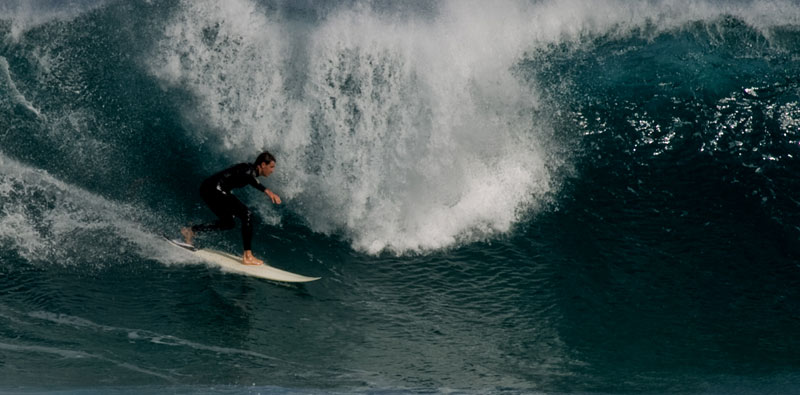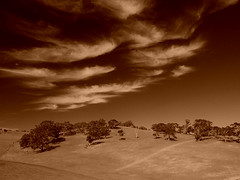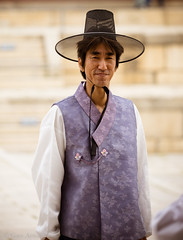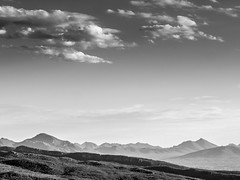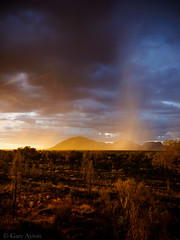Many people are looking for a travel or general use / walkabout camera with higher image quality than point and shoots but with a single 10x zoom lens.
So I thought I would amalgamate the lens review results over at the excellent dpreview site as they appear to have relatively good standards for testing which should allow reasonable comparisons of their results. In doing so, I have tried to estimate values from the charts for each lens at their widest aperture, and compared them at approximately equivalent field of view focal lengths – not their native focal lengths.
I have chosen the 5 common zoom lenses likely to be considered for cropped sensor cameras (none of these lenses are applicable to full frame dSLRs):
- Olympus M.ZD 14-150mm f/4.0-5.6 ED for M43
- Panasonic Lumix G 14-140mm f/4.0-5.8 OIS HD for M43
- Canon EF-S 18-200mm f/3.5-5.6 IS
- Nikon DX 18-200mm f/3.5-5.6 VR
- Tamron 18-270mm f/3.5-6.3 VC macro for EF-S or DX
Clearly from these tests, if you want a light, compact lens with very good image quality and the sharp macro image quality with minimal aberrations, the stand out lens is the new Olympus M.Zuiko Digital 14-150mm f/4.0-5.6 ED, although if HD video is critical to your needs, the heavier, more expensive, and even sharper, Panasonic Lumix HD G HD 14-140mm F4-5.8 OIS may be the better option, particularly if you choose a Panasonic Micro Four Thirds camera instead of an Olympus one.
Note that the Panasonic M43 cameras use in-camera optical corrections and the CA results with the Lumix lens is actually neglible after correction (the figures in the table are uncorrected and would apply if the lens is used on an Olympus camera).
Both Panasonic and Olympus cameras are correcting the barrel distortion of their lenses and the table shows the corrected values.
Compared to the Canon, Nikon and Tamron EF-S/DX lenses, the Olympus M.Zuiko Digital 14-150mm f/4.0-5.6 ED lens is:
- half the weight
- significantly shorter
- uses a nice 58mm filter thread instead of more expensive 72mm filters
- is MUCH sharper edge-to-edge at practically all focal lengths at wide open apertures
- has much nicer macro image quality
- nicer bokeh quality
- no zoom creep (although the zoom is a little stiffer)
- has comparable levels of CA
- neglible distortion due to in-camera corrections.
- importantly, for the rapidly increasing use of these cameras for video work, the lens has been optimised to reduce AF noise being captured by the camera microphones.
This Olympus lens shows that you can have your cake and eat it too!
Of course, it is not going to give the same results as a pro quality f/2.8 zoom lens, but these lenses are a totally different size, weight and expense category.
Perhaps now you can understand why I am loving the Micro Four Thirds camera system – you can take more lenses and cameras with you for the same size and weight, which means, more fun!
Furthermore, with the new firmware hack for the Panasonic GH-1, this camera will now give the highest quality HD video of all the dSLRs.
When you want really small and light, you have the options of the excellent Panasonic 20mm f/1.7 pancake lens or the cheaper Olympus 17mm f/2.8 pancake lens.
There are a couple of caveats however:
- if your main aim is capturing fast moving subjects, the Micro Four Thirds system does not currently auto-focus fast enough, and thus you will have to resort to pre-focusing, or resorting to a dSLR such as a Four Thirds Olympus E-30 or E-3 (lenses will be relatively compatible with your Micro Four Thirds camera), or a higher end dSLR from Canon, Nikon, etc. However, all of these 10x zoom lenses are a bit sluggish to AF at telephoto end on moving subjects, so you would probably need a lens better designed for sports anyway.
- if you also want to use large f/2.0 or f/2.8 zoom lenses, you need a bigger dSLR to make them easier to hold.
If you do decide to go with Canon or Nikon cropped sensor dSLRs, the Tamron lens offers 15x zoom with reasonable image quality.
NB. MTF-50 is an indicator of sharpness, the higher the figure, the better it is.
NB. 10x zoom lenses should not be expected to give nice smooth bokeh quality, and these lenses show this, however, it would appear that the Olympus lens gives the most pleasing bokeh of the five lenses.
| Oly M.ZD | Pan M43 | Canon | Nikon | Tamron | |
| focal range | 14-150 | 14-140 | 18-200 | 18-200 | 18-270 |
| aperture | 4.0-5.6 | 4.0-5.8 | 3.5-5.6 | 3.5-5.6 | 3.5-6.3 |
| Price | $US600 | $US790 | $US699 | $US680 | $US629 |
| weight (g) | 280g | 420g | 600g | 560g | 560g |
| length (mm) | 83-142 | 83-142 | 102-162 | 97-162 | 101-190 |
| Filter (mm) | 58mm | 62mm | 72mm | 72mm | 72mm |
| 35mm eq. zoom (mm) | 28-300 | 28-280 | 29-320 | 27-300 | 29-432 |
| close focus (m) | 0.46m | 0.5m | 0.35m | 0.5m | 0.42m |
| macro mag. | 0.25x | 0.2x | 0.31x | 0.26x | 0.32x |
| MTF-50 at max. apertures | |||||
| 28mm centre | 1550 | 1900 | 1200 | 1300 | 1200 |
| 28mm corner | 700 | 760 | 400 | 725 | 650 |
| 100mm centre | 1450 | 1450 | 1450 | 1100 | 1500 |
| 100mm corner | 850 | 1000 | 750 | 450 | 750 |
| 200mm centre | 1400 | 1200 | 1000 | 750 | 1125 |
| 200mm corner | 700 | 750 | 400 | 460 | 650 |
| 300mm centre | 1125 | 1250 | 1125 | 1000 | 1100 |
| 300mm corner | 650 | 700 | 700 | 650 | 600 |
| max. CA at corners | |||||
| 28mm | 0.13% | 0.12% | 0.11% | 0.14% | 0.08% |
| 200mm | 0.14% | 0.08% | 0.09% | 0.10% | 0.02% |
| 300mm | 0.11% | 0.16% | 0.22% | 0.16% | 0.16% |
| distortion 28mm | +1.2%# | +1.6%# | +3.4% | +2.8% | +3.5% |
| max pincushion | nil# | nil# | -1.9% | -2.3% | -2% |
| best native focal lenth | 25mm | 25mm | 50mm | 24mm | 50mm |
| bokeh | the most pleasing |
ok? | ok bokeh | harsh bokeh | ok bokeh |
| macro IQ | nice macro IQ | nice | soft macro | soft macro | soft macro |
| zoom creep | nil | nil | ? | yes | yes |
| notes | HD video silent AF IS via camera |
HD video silent AF
IS Stepless aperture |
IS | IS | IS |
Other 10x zoom lenses:
- Ricoh GXR P10 lens kit 28-300mm f/3.5-5.6 VC – but only a tiny sensor in this lens
- Samsung 18-200mm OIS / F3.5-6.3 for its NX mirror-less cameras – not yet available ? 2011
- Sony NEX 18-200mm f/3.5-6.3 OIS for the NEX mirror-less cameras – not yet available
- Olympus ZD 18-180mm f/3.5-6.3 ED – consumer grade Four Thirds lens gives 36-360mm coverage and weighs only 440g and costs $US499
- Sigma 18-200mm f/3.5-6.3 DC OS HSM – cropped sensor lens; less distortion and CA than the Canon, Nikon and Tamron lenses displayed in the table above, but not as sharp as them, and with less effective IS.
- Sigma 18-250mm f/3.5-6.3 DC OS HSM – cropped sensor lens; not as sharp as the Tamron but faster AF and better build.
- Canon EF 28-300mm f/3.5-5.6 L IS USM – pro grade full frame introduced in 2004 but weighs 1.7kg and costs $US2420
- Sigma 50-500mm f/4.5-6.3 OS HSM full frame – introduced in 2010, available in Canon, Nikon, Pentax and Sony versions but uses a 95mm filter, weighs 2kg and costs $US2400! There is an older non-IS version of this lens. Personally, I would go for a smaller, lighter 4x telephoto zoom with better image quality, but some people may need such a lens.
Another alternative – wide aperture 3-5x zoom lens with 2x teleconverter:
- Olympus ZD 50-200mm f/2.8-3.5 with EC-20 2x teleconverter
- provides 100-400mm range at f/2.8-3.5 and 200-800mm range at f/5.6-7.0 image stabilised with Olympus camera bodies, pro grade and weighs only 1kg excl. tripod mount and EC-20
- ie. equates to 100-800mm f/2.8-7.0
- Olympus ZD 90-250mm f/2.8 with 2x teleconverter
- provides 180-500mm range at f/2.8 and 360-1000mm range at f/5.6, super pro grade and weighs over 3kg but that is much less than anything in the Canon or Nikon line up for similar telephoto reach.
- ie. equates to 180-1000mm f/2.8-5.6
- Canon or Nikon 70-200mm f/2.8 IS/VR with 2x teleconverter
- provides 70-200mm range at f/2.8 and 140-400mm range at f/5.6 image stabilised but weighs 1.7kg
- ie. equates to 70-400mm f/2.8-5.6 or 112-640mm on a 1.6x cropped sensor Canon
Since writing this post, Nikon released their full frame Nikkor AF-S 28-300mm f/3.5-5.36 ED VR II G lens for €899 or currently about $US999 which gives a great option for Nikon D700 users in particular:
- made in Thailand, it obviously provides 28-300mm coverage in 35mm full frame terms but also 42-450mm when used on a DX crop camera.
- close focus to 50cm
- zoom lock switch to prevent zoom creep, and 9 rounded aperture blades
- it is too noisy for recording video while it focuses, but then you probably wouldn’t use a current Nikon dSLR to do high quality video anyway.
- 2 ED and 3 aspherical elements but no optical performance reports to date
- it is said to be sharp and certainly seems much sharper than the Nikkor 70-300mm and the DX 18-200mm but less sharp than the pro lenses or the primes as would be expected
- it has lots of distortion at focal lengths other than 35mm – “Distortion is strong barrel at 28mm, none around 32mm to 35mm, strong pincushion midrange and mid-tele, and moderate pincushion at 300mm”.
- bokeh seems reasonable
- the lens hood looks a bit dysfunctional and I suspect many will leave it at home
- 77mm and weighs 800g – less than half the weight of the Canon 28-300mm L lens, but still not a light lens to carry all day – it is still twice as heavy as a Micro Four Thirds Panasonic option and almost 3x heavier than the Olympus option!
- Ken Rockwell loves this lens but does state: “If you don’t mind the hefty size, this 28-300mm is perfect. I wouldn’t enjoy traveling with it, and it is perfect for use on a dedicated photo trip”
- for a full frame user who can’t afford the faster aperture pro lenses, it will give a lot of versatility with somewhat faster AF and better high ISO performance than a Panasonic GH2 with 14-140mm lens, but at significantly more weight, bulk and without the superb HD video capabilities or automatic distortion correction capabilities of the GH2.
- at the end of the day though, a substantial point of having a full frame dSLR is not only for high ISO performance but shallow depth of field work, and full frame users are still likely to want their heavy, large 70-200mm f/2.8, 24mm f/1.4, 50mm f/1.4 and 85mm f/1.4 lenses with them as well so perhaps the 28-300mm may in fact be redundant for most, and they would be better suited to having a GH2 with 14-140mm lens instead as a 2nd camera for travel and video work.
- I suspect this lens is a wonderful marketing ploy by Nikon which entices new users to a full frame dSLR at a reasonable price point with the delusion that this lens will be all they will need or want, only to find it does not have the aperture they need, nor the AF speed, and so they end up having this lens becoming redundant – too big for carry around or travel and not good enough for their needs. But by then they are committed to the Nikon system and spending more money – a very nice marketing ploy indeed!
